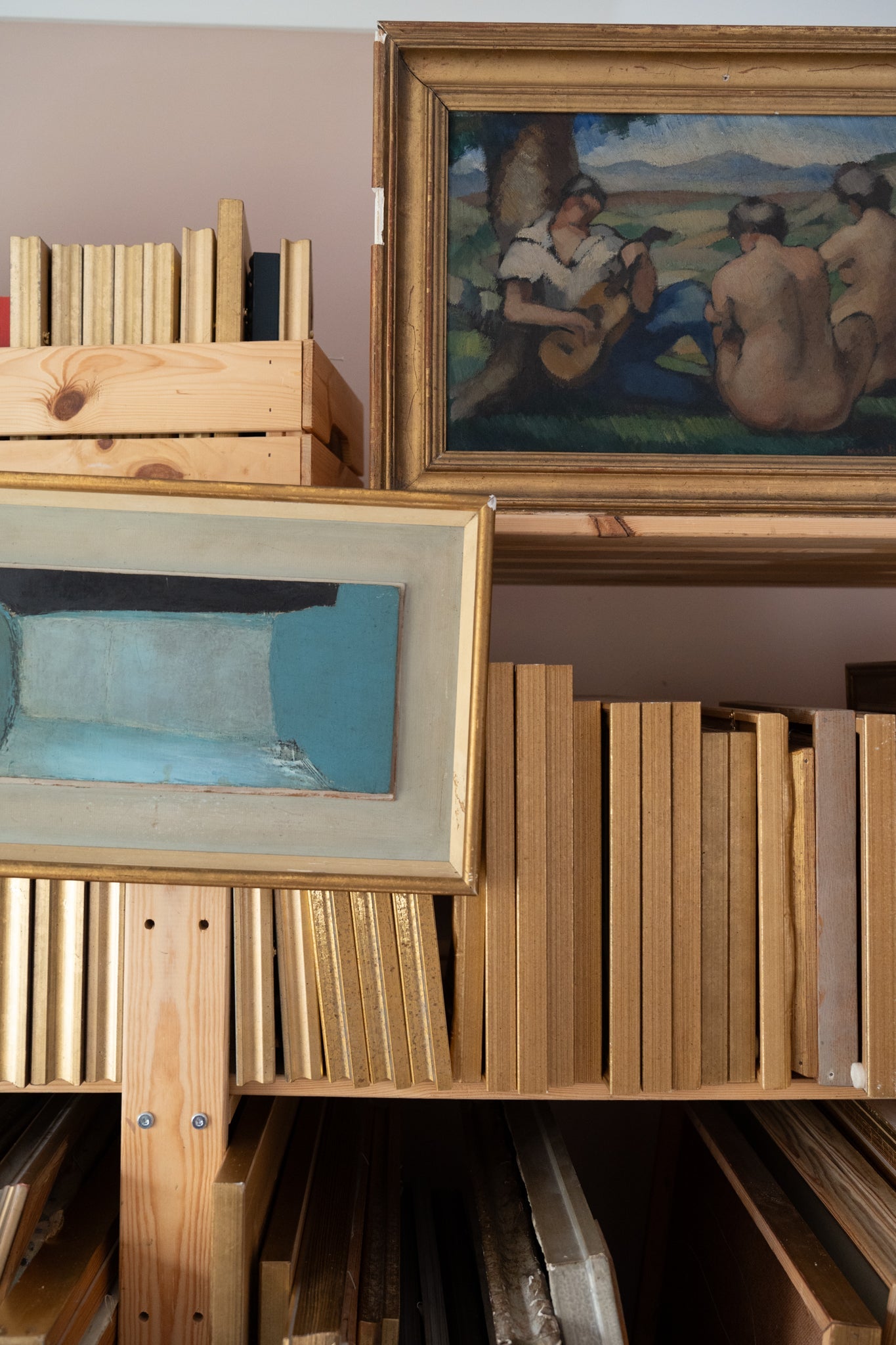HOW TO STYLE THE PERFECT CORNER ART HANG
Corners are tricky and are often overlooked or awkward to decorate. But when done well, a corner hang can become the most characterful part of the room. What seems like dead space can actually be transformed into one of the most eye-catching focal points in your home. With the right corner styling approach, these neglected nooks can become destinations in their own right, showcasing personality and creativity.
Whether you’re tight on wall space, want to soften an architectural edge, or just fancy something a little unexpected, a well-considered corner hang brings depth, interest, and charm right where it’s least expected.

Why Corners Deserve More Attention
We tend to default to hanging art on large, open walls, but corners offer a brilliant opportunity to get creative. They naturally draw the eye, and when styled intentionally, they make a space feel layered. This is especially true in smaller homes where every inch counts and art for small spaces needs to be strategic.
Instead of leaving corners bare, embrace them. A corner gallery wall can create flow between adjoining walls and add visual interest to transitional areas like landings, hallways, or the walls tucked behind sofas and reading chairs.
Another benefit? Corners can help anchor unusual architectural quirks. If your home has slanted ceilings, alcoves, or oddly angled walls, unusual layouts for art can turn what feels like a limitation into a strength.
How to Create a Corner Hang That Works
So how do you make a corner hang feel intentional rather than improvised? The key lies in mixing balance with spontaneity. Here are a few ideas:
1. Start with a Hero Piece
Just like any gallery wall, begin with one anchor artwork. This might be a particularly large canvas, a striking abstract artwork, or a textile piece with rich texture. The hero piece sets the tone, and the smaller works orbit around it. Think of it as the anchor in your corner styling plan.

2. Mix Your Scales
Combine large and small works for a dynamic layout. Contrasting scales help avoid a cluttered feel and create rhythm as the eye moves around the corner. Small artworks work brilliantly in tight spots, another reason art for small spaces thrives in corners.

3. Use a Mix of Frames
Uniform frames can sometimes feel flat. Instead, lean into variety. A mix of wood, gilt, and painted finishes creates depth and warmth. This approach also makes it easier to incorporate different styles of artwork, from contemporary paintings to vintage finds, without worrying about them clashing.

Interior Designer in Bath, Bristol, London, Toronto - Sean Symington
4. Layer Different Mediums
Corners really shine when they break free of traditional rules. Don’t limit yourself to oil paintings. Try framed textiles, pressed flowers, woven wall hangings, or even framed ephemera like old postcards or a menu from a special meal mounted on the wall. This kind of layering keeps the corner playful and supports interior styling that feels collected rather than curated.

5. Let Go of the Rules
Perhaps the biggest secret to successful corner styling is not being too rigid. Unlike a perfectly aligned gallery wall, a corner hang benefits from looseness. Allow the pieces to wrap naturally, let frames overlap slightly, and follow your instinct more than the measuring tape. After all, the charm lies in creating something personal, not perfect.
A Note on Placement
When planning your corner layout, don’t be afraid to wrap the hang around the bend. This is what makes it feel intentional rather than like two disconnected walls. Wrapping the pieces brings both walls into conversation and guides the eye smoothly across the space.
If your seating or furniture already sits in the corner, that’s even better. Hanging artwork above a corner sofa or reading nook adds an enveloping, cosy feel. It’s an ideal example of art for small spaces: the furniture grounds the area, and the art adds a sense of intimacy.
Corners above desks also work brilliantly. They frame your workspace and make even a small office feel considered.
Making the Most of Unusual Layouts
Many homes have quirks: awkward alcoves, rooms that aren’t perfectly square, or ceilings that slope at odd angles. Instead of fighting these features, embrace them with unusual layouts for your art. A stairwell corner, for instance, can become a striking vertical gallery. A narrow kitchen corner can house a playful mix of paintings and prints.
These unexpected choices often feel more memorable than a large painting on a big wall. They show a willingness to experiment with interior styling, turning so-called problem areas into opportunities.
Final Thoughts on Corner Styling
Corners are an invitation to rethink the way we approach decorating. By leaning into corner styling and embracing hanging art in less conventional places, you can add depth and character to your home. The beauty of a corner hang lies in its ability to surprise and to turn overlooked areas into some of the most interesting design features in the room.
So next time you’re considering where to place new artwork, don’t just look at the big blank wall. Look to the corners. Whether you’re dealing with art for small spaces, experimenting with unusual layouts, or simply adding personality through thoughtful interior styling, a corner hang might just be the perfect solution.
Have you ever styled a corner hang? We’d love to hear your take, or even better, see what you’ve created.








